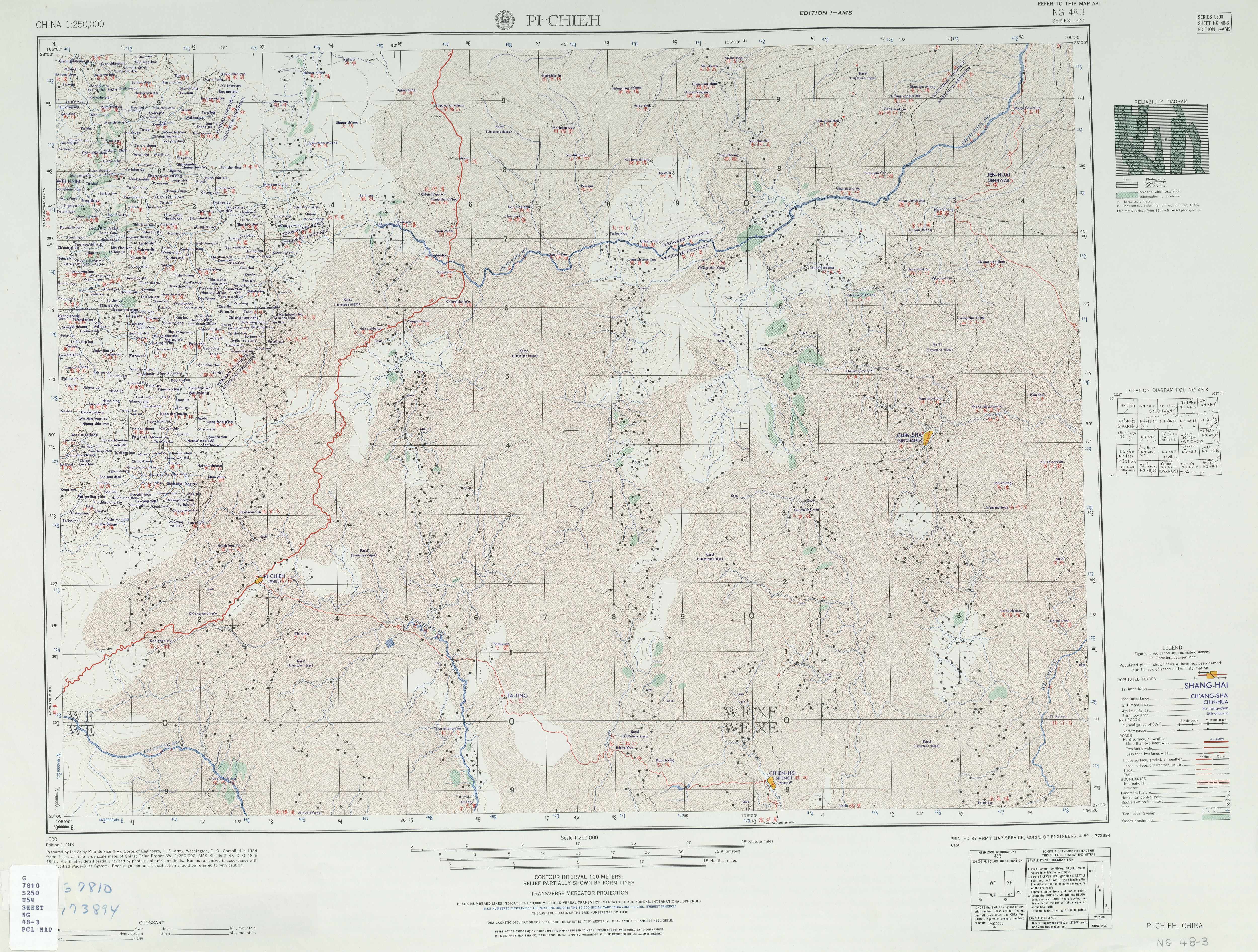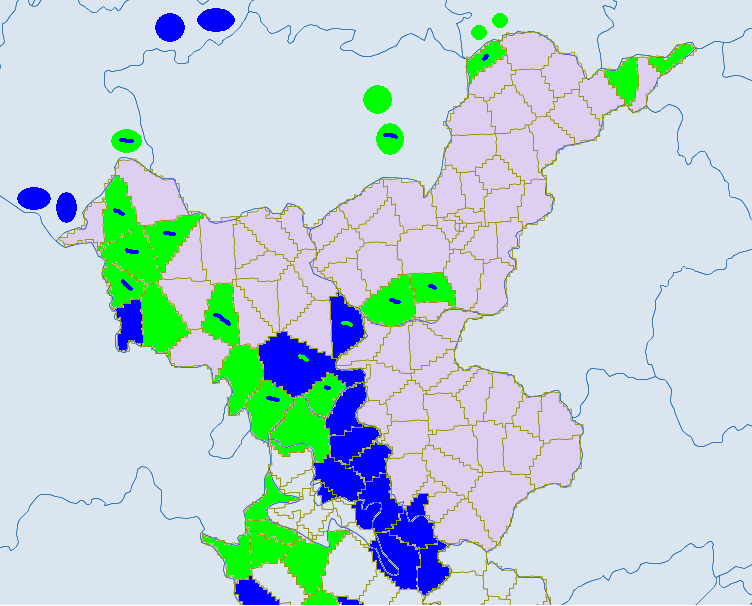Bijie Prefecture on:
[Wikipedia]
[Google]
[Amazon]
Bijie () is a
 Bijie borders
Bijie borders
 Bijie City consists of one district, one county-level city, five counties and one autonomous county. These are:
*
Bijie City consists of one district, one county-level city, five counties and one autonomous county. These are:
*
Official government website of Bijie City
{{Authority control Cities in Guizhou Prefecture-level divisions of Guizhou
prefecture-level city
A prefecture-level city () or prefectural city is an administrative division of the People's Republic of China (PRC), ranking below a province and above a county in China's administrative structure.
During the Republican era, many of China' ...
in northwestern Guizhou Province
Guizhou (; formerly Kweichow) is a landlocked province in the southwest region of the People's Republic of China. Its capital and largest city is Guiyang, in the center of the province. Guizhou borders the autonomous region of Guangxi to t ...
, China, bordering Sichuan
Sichuan (; zh, c=, labels=no, ; zh, p=Sìchuān; alternatively romanized as Szechuan or Szechwan; formerly also referred to as "West China" or "Western China" by Protestant missions) is a province in Southwest China occupying most of th ...
to the north and Yunnan
Yunnan , () is a landlocked province in the southwest of the People's Republic of China. The province spans approximately and has a population of 48.3 million (as of 2018). The capital of the province is Kunming. The province borders the ...
to the west.
The Daotianhe Reservoir, located to the north of the town was commissioned in 1965 with a rated annual capacity of 6.5 million cubic meters.
On 10 November 2011, the former Bijie Prefecture () was converted to a prefecture-level city, and the former county-level city
A county-level municipality (), county-level city or county city, formerly known as prefecture-controlled city (1949–1970: ; 1970–1983: ), is a county-level administrative division of the People's Republic of China. County-level ...
of Bijie was rechristened Qixingguan District
Qixingguan District () is the seat of the city of Bijie, Guizhou
Guizhou (; formerly Kweichow) is a landlocked province in the southwest region of the People's Republic of China. Its capital and largest city is Guiyang, in the center o ...
.
Geography and climate
 Bijie borders
Bijie borders Zunyi
Zunyi () is a prefecture-level city in northern Guizhou province, People's Republic of China, situated between the provincial capital Guiyang to the south and Chongqing to the north, also bordering Sichuan to the northwest. Along with Guiyang an ...
to the east, Anshun
Anshun () is a prefecture-level city located in southwestern Guizhou province, southwest China, near the Huangguoshu Waterfall, the tallest in China. As of the 2010 census, it had a population of 2,297,339. The city proper had a population o ...
and Liupanshui
Liupanshui () is a city in western Guizhou province, People's Republic of China. The name Liupanshui combines the first character from the names of each of the city's three constituent counties: Liuzhi, Panzhou, Shuicheng. As a prefecture-level ...
to the south, Zhaotong
Zhaotong () is a prefecture-level city located in the northeast corner of Yunnan province, China, bordering the provinces of Guizhou to the south and southeast and Sichuan to the northeast, north, and west.
History
Zhaotong has historic and ...
and Qujing
Qujing () is a prefecture-level city in the east of Yunnan province, China, bordering Guizhou province to the east and the Guangxi Zhuang Autonomous Region to the southeast; thus, it was called "Key between Yunnan and Guizhou" () and "Throat of Yu ...
(Yunnan
Yunnan , () is a landlocked province in the southwest of the People's Republic of China. The province spans approximately and has a population of 48.3 million (as of 2018). The capital of the province is Kunming. The province borders the ...
) to the west, and Luzhou
Luzhou (; Sichuanese Pinyin: Nu2zou1; Luzhou dialect: ), formerly transliterated as Lu-chou or Luchow, is a prefecture-level city located in the southeast of Sichuan Province, China. The city, named Jiangyang until the Southern and Northern Dyn ...
(Sichuan
Sichuan (; zh, c=, labels=no, ; zh, p=Sìchuān; alternatively romanized as Szechuan or Szechwan; formerly also referred to as "West China" or "Western China" by Protestant missions) is a province in Southwest China occupying most of th ...
) to the north. It spans latitude 26°21′−27°46′ N and longitude 105°36′−106°43′ E, and is marked heavily by the presence of the Wumeng Mountains () as well as karst topography. The Wu, Beipan, and Chishui Rivers are the most important rivers that originate here. The highest elevation is Jiucaiping (), at , on the border of Hezhang and Weining counties.
Due to its low latitude and elevation above , Bijie has a monsoon
A monsoon () is traditionally a seasonal reversing wind accompanied by corresponding changes in precipitation but is now used to describe seasonal changes in atmospheric circulation and precipitation associated with annual latitudinal osci ...
-influenced subtropical highland climate
An oceanic climate, also known as a marine climate, is the humid temperate climate sub-type in Köppen classification ''Cfb'', typical of west coasts in higher middle latitudes of continents, generally featuring cool summers and mild winters ...
(Köppen Köppen is a German surname. Notable people with the surname include:
* Bernd Köppen (born 1951), German pianist and composer
* Carl Köppen (1833-1907), German military advisor in Meiji era Japan
* Edlef Köppen (1893–1939), German author and ...
''Cwb''), bordering on a humid subtropical climate (Köppen ''Cwa'') with very warm, rainy summers and cool, damp winters. The monthly 24-hour average temperature ranges from in January to in July, while the annual mean is . Rainfall is very common year-round, occurring on 206 days of the year, but over half of the annual total () occurs from June to August. With monthly percent possible sunshine ranging from 15% in January to 44% in August, the city receives 1,218 hours of bright sunshine annually; spring is sunnier and features warmer daytime temperatures than autumn.
Administration
 Bijie City consists of one district, one county-level city, five counties and one autonomous county. These are:
*
Bijie City consists of one district, one county-level city, five counties and one autonomous county. These are:
* Qixingguan District
Qixingguan District () is the seat of the city of Bijie, Guizhou
Guizhou (; formerly Kweichow) is a landlocked province in the southwest region of the People's Republic of China. Its capital and largest city is Guiyang, in the center o ...
();
* Qianxi City ();
* Dafang County
Dafang (), called Dading () until 1958, is a county of Guizhou
Guizhou (; formerly Kweichow) is a landlocked province in the southwest region of the People's Republic of China. Its capital and largest city is Guiyang, in the center of the ...
();
* Jinsha County
Jinsha () is a county in northwestern Guizhou province, China, bordering Sichuan to the north across the Chishui River. It is the easternmost county-level division of the prefecture-level city of Bijie
Bijie () is a prefecture-level city in nort ...
();
* Zhijin County
Zhijin County is a county under the administration of the prefecture-level city of Bijie in west-central Guizhou province, China.
History
Zhijin has been inhabited since the Qin, populated mainly by the Gelao. After the Jin, the Yi moved i ...
();
* Nayong County
Nayong County () is a county in the west of Guizhou province, China. It is under the administration of Bijie
Bijie () is a prefecture-level city in northwestern Guizhou Province, China, bordering Sichuan to the north and Yunnan to the west.
Th ...
();
* Hezhang County
Hezhang () is a county in the northwest of Guizhou province, China, bordering Yunnan to the north. It is under the administration of the prefecture-level city of Bijie.
Ethnic groups
The ''Hezhang County Gazetteer'' (2001:105-108) lists the follow ...
();
* Weining Yi Hui and Miao Autonomous County
Weining Yi Hui and Miao Autonomous County (; Xiao'erjing: ) is a county of Guizhou, China. It is under the administration of the prefecture-level city of Bijie.
Notable attractions include Majie Ethnic Yi Village () and the historic site of Shime ...
().
Demographics
According to the 2010 Sixth National Census, Bijie City had apermanent resident
Permanent residency is a person's legal resident status in a country or territory of which such person is not a citizen but where they have the right to reside on a permanent basis. This is usually for a permanent period; a person with suc ...
population of 6,536,370, an increase of 208,899 (3.3% or 0.33% annually), 3,400,195 (52.02%) of which were male, producing a male-female ratio of 108.42:100. Children aged 0−14 numbered 2,029,934人 (31.06%), persons aged 15−64 numbered 4,018,583 (61.48), and seniors 65+ numbered 487,853 (7.46%). The urban population stood at 1,711,222 (26.18%). Persons of Han ethnicity numbered 4,824,015 (73.80%), while minorities formed the other 26.20%.
Transport
At present the backbone of the transport network in Bijie City is formed by China National Highways321
Year 321 ( CCCXXI) was a common year starting on Sunday (link will display the full calendar) of the Julian calendar. In the Roman Empire, it was known as the Year of the Consulship of Crispus and Constantinus (or, less frequently, year 107 ...
and 326. , Bijie is the only prefecture-level city of Guizhou to lack rail service; this changed with the 2020 opening of the Leshan (Sichuan)−Guiyang Railway (). Other projected rail lines are Bijie− Shuicheng− Xingyi () and Zhaotong
Zhaotong () is a prefecture-level city located in the northeast corner of Yunnan province, China, bordering the provinces of Guizhou to the south and southeast and Sichuan to the northeast, north, and west.
History
Zhaotong has historic and ...
(Yunnan)− Weining−Bijie− Jinsha−Zunyi
Zunyi () is a prefecture-level city in northern Guizhou province, People's Republic of China, situated between the provincial capital Guiyang to the south and Chongqing to the north, also bordering Sichuan to the northwest. Along with Guiyang an ...
. The city is served by the Bijie Feixiong Airport .
Historical sites
Notable historical sites in Bijie include the following: ;Historical inscriptions *Ma'an Mountain, Qianxi Yi Cliff Inscription (): located in Bakuaitian, Chengguan Township, Qianxi () *Wopo, Hezhang Cliff Inscription (): located in Xique, Wopo Township, Hezhang () *Qixingguan, Bijie Cliff Inscription (): located in Qixing Township (), along the border between Hezhang County and Qixingguan District *Chekaiqing, Nayong Chinese-Yi Cliff Inscription (): located in Kaiqing, Poqi Township, Zhikun District () *Guanyindong, Jinsha Buddha Image Cliff Inscription (): located in Yankong (), near the local elementary school *Qianxi "Reverse Cliff Inscription" (): located in Zhongguan, Zhongjian Township () *Dafang Shuixi Dadu River Bridge Inscription (): located on the banks of the Dadu River () between Huangnitang (), Dafang County, and Aoshui Township (), Qianxi County *Dafang Hejia Bridge Yi Inscription (): located on the banks of the Mudu River () in Shishu Township () *Dafang Mayi River Bridge Inscription (): located on the Mayi River Bridge () in Songhe Township () *Dafang Yi Ancestral Origin Inscription (): located in Qingjiao, Shishu Township ()References
External links
Official government website of Bijie City
{{Authority control Cities in Guizhou Prefecture-level divisions of Guizhou